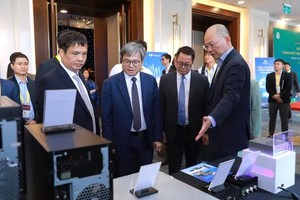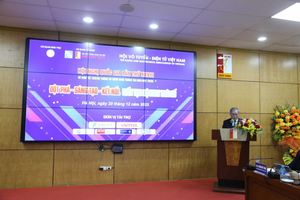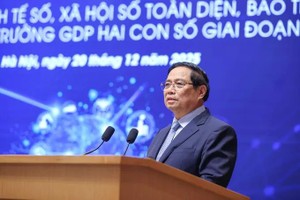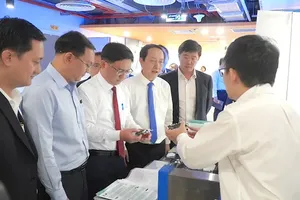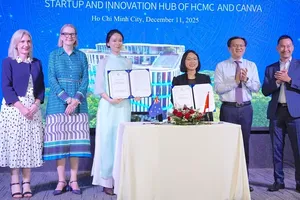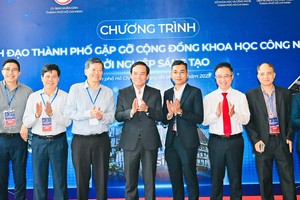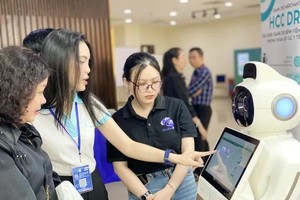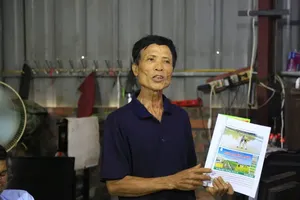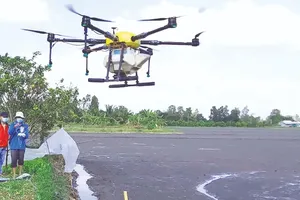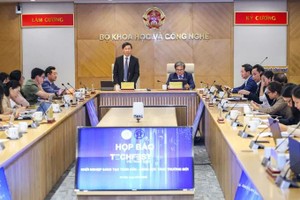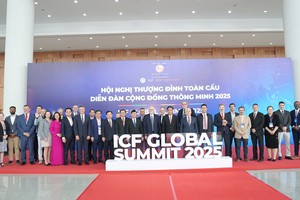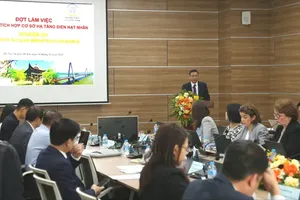
Ho Chi Minh City currently hosts several large-scale technology hubs, such as the Quang Trung Software Park (QTSC), the Saigon Hi-Tech Park (SHTP), the HCMC Biotechnology Center, and various digital technology zones. Among these, SHTP holds a strategic position to become a multi-purpose high-tech center, a convergence point for technology, innovation, and sustainable development.
Looking toward a science and technology park
After more than 20 years of development, SHTP has invested in a relatively complete infrastructure, attracting 161 projects, including many high-tech multinational corporations such as Intel, Samsung, and Nidec.
In 2024, SHTP's export turnover reached US$20.77 billion, accounting for nearly 40 percent of HCMC's total export value. With its current growth trajectory, according to the Board of Management of SHTP, the existing model has reached its limits and needs to evolve for further growth. In this context, the Science and Technology Park model is envisioned as a "technology harbor" that facilitates the import and export of high-tech goods, serving as a critical gateway for the exchange of technological knowledge, high-tech products, and support services for advanced technologies.
For years, countries like Japan and South Korea have consistently invested in the development of science parks, with each nation tailoring its models to fit its economic growth strategies. According to Mr. Nakajima Takashi, an expert from JICA (Japan), Japan is home to numerous science parks and smart cities such as Tsukuba, Kanagawa, and Kashiwanoha.
Among them, the Tsukuba Science City has excelled as a bridge between academia and industrial development. It has become a hub for innovation, hosting numerous projects and serving as a launchpad for startups and innovative enterprises. Meanwhile, Mr. Kim Wan Jin, CEO of Mekonglink and Representative of the Korea TechnoPark Association in the Mekong Subregion, noted that South Korea currently operates 19 science and technology parks. These parks foster robust networks of tech companies and operate closely in line with the strategic vision and development plans of their respective localities.
According to the Board of Management of SHTP, the planned Science and Technology Park at SHTP will be developed over the 2024–2034 period, covering an area of 194.8 hectares with distinct functional zones. The project will be implemented in two phases: the first, from 2024 to 2031, will focus on investment preparation, policy approval, feasibility studies, land clearance, and the construction of core infrastructure such as transportation, power supply, and water systems. The second phase, from 2031 to 2034, will complete the remaining infrastructure and promote investment attraction.
The development of this Science and Technology Park is aligned with the National Master Plan for the 2021–2030 period, with a vision to 2050 (as stated in Resolution No.81/2023/QH15 dated January 9, 2023, of the National Assembly), and the Southeast Region Plan for the same period (outlined in the Prime Minister’s Decision No.370/QD-TTg dated May 4, 2024). A representative of the Board of Management of SHTP emphasized that the initiative prioritizes the expansion of SHTP into a full-fledged science and technology park, creating the most favorable environment for R&D, technology incubation, and high-tech commercialization.
Fostering an innovation-driven startup ecosystem
While awaiting the Government’s decision on establishing a Science and Technology Park at SHTP, HCMC is actively exploring the creation of a multi-purpose high-tech center. To bring this vision to life, experts emphasize that several key initiatives must be undertaken.
These measures include refining policy frameworks that support science, technology, and innovation; accelerating the development of the Science and Technology Park at SHTP; and founding a city-level Institute for Information Technology and Innovation.
In parallel, the city aims to cultivate an innovation-driven startup ecosystem centered around SHTP, with strong ties to the high-caliber talent pool at Vietnam National University - HCMC. Expanding international partnerships will also be essential to attract investment and drive technology transfer in fields such as semiconductors, artificial intelligence (AI), biotechnology, and renewable energy.
Mr. Nguyen Ky Phung, Head of the Board of Management of SHTP, emphasized, “SHTP holds strategic potential to evolve into a multi-purpose high-tech center. It benefits from a solid legal foundation, long-term development plans, advanced infrastructure, a highly skilled workforce, and a thriving innovation ecosystem. These assets position SHTP as a key contributor to Vietnam’s broader goals for economic transformation and industrial advancement.”
Speaking at a recent workshop on building the Multi-Purpose High-Tech Center in HCMC—co-organized by the Department of Science and Technology, the HCMC Institute for Development Studies, and SHTP— Mr. Nguyen Van Duoc, Chairman of the HCMC People's Committee, noted, “The city has strong foundations in high-tech industries and plays a vital role as a knowledge hub for innovation, scientific research, and technology transfer. The establishment of a multi-purpose high-tech center must fully leverage the infrastructure and capabilities the city already possesses.” In practice, SHTP presents ideal conditions to evolve into such a center.
The planned Science and Technology Park is envisioned as a multidisciplinary research hub and a regional growth catalyst aligned with the Fourth Industrial Revolution. The model is designed to strengthen strategic linkages with local universities—especially Vietnam National University-HCMC—and to integrate seamlessly with the high-interaction creative urban area in eastern HCMC. The Science and Technology Park proposal has already been submitted by the city to the central government for approval.

